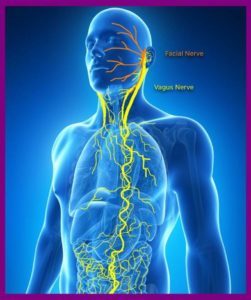 I trust you have enjoyed the pervious blogs about humming. As always, there is so much information that can be shared. But in truth, the importance of the release of Nitric Oxide and Melatonin as well as the role of Sound & Immunity through humming has been truly the focus of many interviews.
I trust you have enjoyed the pervious blogs about humming. As always, there is so much information that can be shared. But in truth, the importance of the release of Nitric Oxide and Melatonin as well as the role of Sound & Immunity through humming has been truly the focus of many interviews.
This material including the use of humming to reduce heart rate and blood pressure as well as enhancing our immune system continues to be relevant in this blog. I’d like to add some additional material about the how’s and why of this subject.
The title of this blog—“Vagal Toning” is actually a pun. Because this blog will focus on the vagus nerve, it’s importance and how humming can influence it. In sound, the word tone (and toning) is predominant and has to do with self-created sounds such as a hum or an extended vowel. But in science and medicine, Vagal Tone doesn’t have anything to do with sound (except that as we’ll find out, sound can really affect the vagus nerve). Vagal Tone is a way of measuring how relaxed or stressed the vagus nerve is and therefore how relaxed or stressed we are. Vagal tone is an internal biological process that represents the activity of the vagus nerve. Increasing your vagal tone activates the parasympathetic nervous system, and having higher vagal tone means that your body can relax faster after stress.
The vagus nerve is the largest nerve in our body. Also called the 10th Cranial Nerve, it is a fundamental component of the parasympathetic branch of the autonomic nervous system. This branch of the nervous system is not under conscious control and is largely responsible for the regulation of several body compartments at rest. These include heart rate, constriction of blood vessels, heart, lungs, digestive track, liver, immune system regulation as well as control of gastrointestinal sensitivity, motility and inflammation.
I included information about how sound can affect this nerve in Healing Sounds. Here’s a quote from it: “The ear is also related to the vagus or tenth cranial nerve. This nerve affects the larynx, the bronchi, the heart and the gastro-intestinal track and thus our voice, our breathing, our heart rate and our digestion are affected by the ear. Is it any wonder then that on a purely physiological level listening to the soothing music created by the sacred sounds of vocal harmonics can and will help create states of deep relaxation and meditation?”
Much of this information came from Alfred Tomatis, M.D. who did some extraordinarily important work on the importance of the ear and listening to our nervous system. In particular, the work of Dr. Tomatis’ Electronic Ear is worthwhile investigating.
When The Humming Effect came out, many people reminded me of the importance of the vagus nerve in terms of humming. Since 1992 when Healing Sounds was published, the Polyvagal Theory has occurred and been largely accepted into mainstream medicine and therapies. This theory suggest that if anything, the importance of the vagus nerve is even greater than believed. In addition, the Polyvagal Theory, which is proposed by Dr. Stephen Porges, suggests that there is an additional level to the flight or flight principle, which occurs when we face stress and trauma. This adds the category of “freeze” to fight or flight. When something stressful happens, we react and combat it (fight), we run away (flight) or we become embolized (freeze). Many therapists have found this last category to be most helpful in understanding conditions such as depression that occur when people are traumatized.
As previously noted, higher vagal tone is an indication of less stress. When we have higher vagal tone, we are more relaxed, have less inflammation and our immunity is enhanced.
It is not my intention to present a paper on the vagus nerve, but rather to let you know that while for the most, the vagus nerve is not consciously controlled, there seem to be at least two or more ways of helping create better vagal tone. Two of these are breathing and humming. Thus Conscious Humming (which incorporates deep breathing and slow humming as has been suggested in previous blogs) is an excellent way of enhancing our vagal tone. Yes, another indication that humming is good for you—perhaps mandatory.
For those interested in more information on the vagus nerve, there’s much material available on the Internet.
One more thing—Heart Rate Variability (HRV)! This is literally the “gold standard” for indicating what our vagal tone is like. Higher HRV typically correlates with a higher vagal tone. And what can help manifest this higher HRV? Conscious Humming!
In our next blog, we’ll focus on another technique that when used with Conscious Humming will make your internationalized sounds even more effective.




